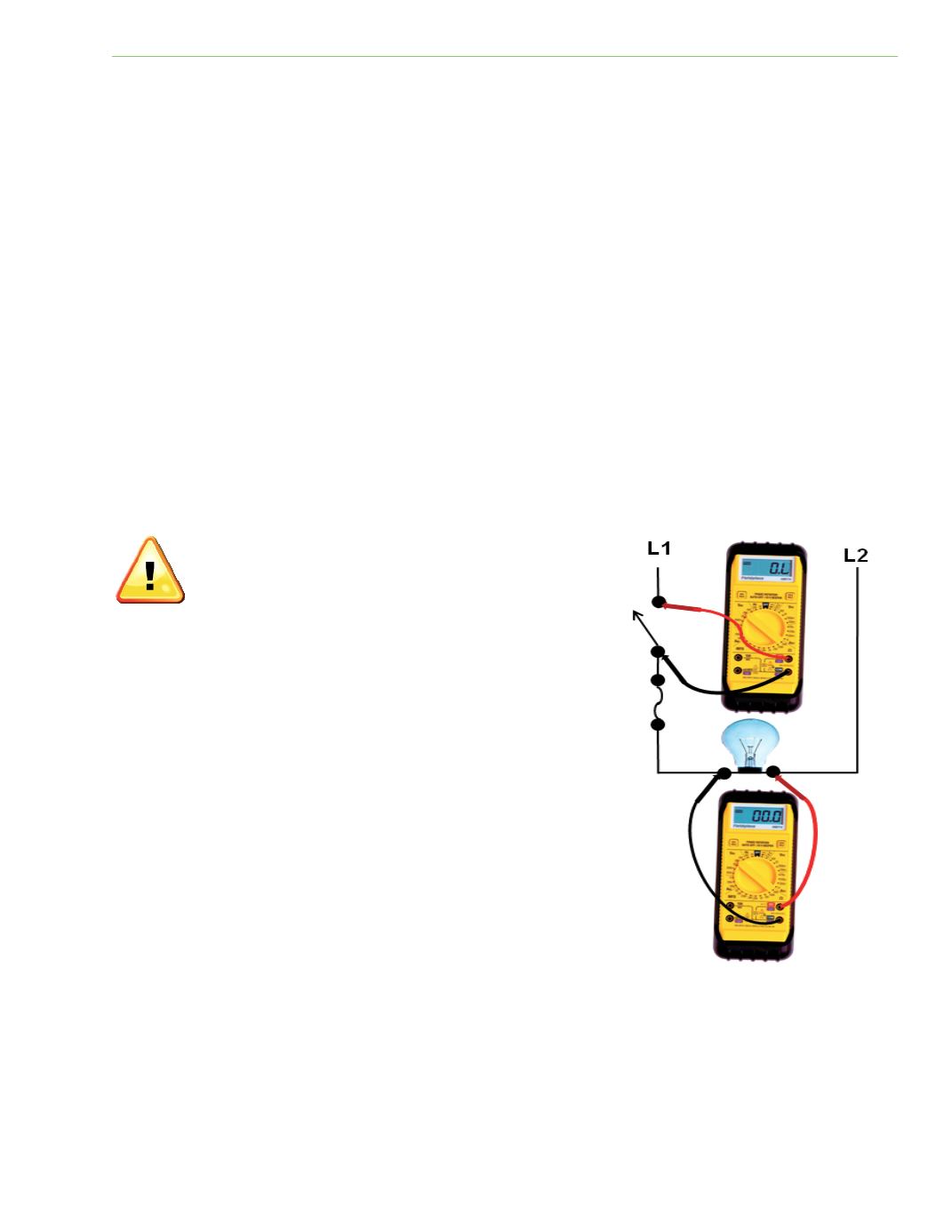

Electrical Theory & Applications for HVACR
Chapter 1: What Is Electricity?
Page 9
CAPACITIVE REACTANCE
A capacitor is a device that stores electrical energy for later use. A capacitor is composed of two
conducƟve plates with an insulaƟng (dielectric) material between them. In an A/C circuit, the
capacitor conƟnuously charges and discharges, creaƟng an opposiƟon to current flow or a type of
resistance (impedance) referred to as capaciƟve reactance.
IMPEDANCE
Impedance is the total opposiƟon to alternaƟng current flow. “Z” is the symbol for impedance.
MEASURING RESISTANCE
Ohmmeters are used to check resistance. Ohmmeters are very sensiƟve and measure resistance in
Ohms. They measure electron movement calibrated to a voltage supplied by the meter’s baƩery.
When using an ohmmeter, supply voltage must be turned off and disconnected from the device being
tested. When devices are wired in parallel, a conductor should be removed from the device being
measured in order to prevent a feedback circuit.
Failure to disconnect the device from the circuit can cause bodily
harm to the technician and/or severe damage to the
ohmmeter and can result in false readings caused by
electron flow through another circuit.
Resistance readings also reveal specific situaƟons such
as conƟnuity, an open circuit, or a short circuit.
ConƟnuity describes a complete path for electron flow and is
indicated by zero resistance on an ohmmeter. ConƟnuity
indicates no broken wires, open switches or blown fuses.
An open circuit describes an open switch, blown fuse, broken
wire, etc. Electrons cannot flow in an open circuit. The
ohmmeter reveals an open circuit by unlimited resistance
(infinity) or extremely high resistance (megaohms) (O.L. on an
ohmmeter).
A short circuit is a complete circuit (conƟnuity) where none
should exist. There is very liƩle or no resistance in a short
circuit. The ohmmeter detects a short circuit by indicaƟng zero
resistance between two points that should indicate a
measurable resistance or infinity.
Fig. 1‐9: The top ohmmeter indicates
an open circuit. The boƩom meter
shows a shorted circuit.










